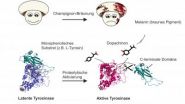(Press-News.org) The number of Americans needing long-term care — also called long-term services and supports (LTSS) — is projected to more than double to 27 million by 2050. Approximately 70 percent of people over the age of 65 will rely on some form of LTSS for an average of three years. The latest issue of Public Policy & Aging Report (PP&AR) lays down a policy prescription for a sustainable system of LTSS in the U.S., using the Federal Commission on Long-Term Care's 2013 final report as its foundation.
With support from The SCAN Foundation, the issue presents nine articles under the theme of "The Federal Commission on Long-Term Care: Setting an Agenda and Moving It Forward." Among them are articles by Commission Chair Bruce Chernof, MD and Vice-Chair Mark Warshawsky, PhD, and Staff Director G. Lawrence Atkins, PhD, as well as interviews with two Commissioners, Carol Raphael, MPA, MEd, and Judith Feder, PhD.
"Addressing the financing, delivery and workforce issues around long-term services and supports is the next health policy frontier, and we cannot wait any longer for action," said Chernof, the president and CEO of The SCAN Foundation. "The bipartisan Commission laid out 28 realistic recommendations and a financing framework, providing groundwork for policymakers to build upon."
Highlights from the issue include:
Chernof and Warshawsky call for LTSS to be a major element of the next White House Conference on Aging, scheduled for 2015.
Atkins addresses the Commission's difficulty in moving beyond a financing framework toward more specific recommendations. He advocates the development of new mechanisms and incentives for individuals and families to meet and prepare for LTSS expenses.
Joe Caldwell, PhD, and Howard Bedlin, JD, MPS, agree that financing reform must have bipartisan support, further emphasizing the need for aging and disability communities working together.
Barbara Gage, PhD, MPA, highlights the benefit of integrated care, where traditional providers partner with others to achieve new quality mandates.
Charissa Raynor, RN, MHSA, addresses workforce development, showcases five training efforts: training at scale, setting minimum training and certification standards, leveraging emerging learning technology, supporting immigrants in home care work, and redesigning home care jobs.
Loren Coleman, CHNA, and LaRhae G. Knatterud, MAPA, demonstrate the effectiveness of LTSS at the state level, focusing on how Minnesota reduced its reliance on institutional care.
Michelle Putman, PhD, and Lex Frieden, MA, LLD, demonstrate the vital role a consumer control approach to LTSS can play in enabling individuals to engage in a full range of life's activities, including lifelong income generation and aging in place.
Lynn Friss Feinberg, MSW, addresses the contributions and needs of the 42 million informal LTSS workforce — i.e., family and friends – whose efforts are valued at an estimated $450 billion annually.
INFORMATION:
Public Policy & Aging Report is a publication of the National Academy on an Aging Society, the policy branch of The Gerontological Society of America (GSA). As the nation's oldest and largest interdisciplinary organization devoted to research, education, and practice in the field of aging, GSA's principal mission — and that of its 5,500+ members — is to advance the study of aging and disseminate information among scientists, decision makers, and the general public. GSA's structure also includes an educational branch, the Association for Gerontology in Higher Education.
PP&AR sets national agenda for long-term care
2014-09-09
ELSE PRESS RELEASES FROM THIS DATE:
Why do mushrooms turn brown?
2014-09-09
This news release is available in German.
The research team of Annette Rompel from the Institute for Biophysical Chemistry, University of Vienna explore the mechanisms behind the "browning reaction" during the spoilage of mushrooms. The researchers were able to demonstrate that the enzyme responsible is already formed prior to fungal spoiling. The detailed study is published online in the well renowned journals, Phytochemistry and Acta Crystallographica.
Understanding the mechanism of enzyme tyrosinase pigmentation is currently of both medical as well as technological ...
Growth factors found in breast milk may protect against necrotizing enterocolitis
2014-09-09
Philadelphia, PA, September 9, 2014 – Necrotizing enterocolitis (NEC) is a devastating gastrointestinal illness affecting up to 10% of premature infants, with a 30% mortality rate, and formula feeding has been identified as a risk factor for NEC. A study published in The American Journal of Pathology found that growth factors present in human breast milk, but not in formula, may explain the protection against intestinal damage. Further, supplementing the diet of newborn NEC-affected rodents with these growth factors promotes epithelial cell survival.
"NEC is a highly ...
A weekly text message could encourage healthier food choices, new study shows
2014-09-09
Many people are unaware that the U.S. Food and Drug Administration's mandated nutrition labels are based on a 2,000-calorie-a-day diet, but a simple weekly text message reminder can greatly improve that awareness, according to a new study from the Johns Hopkins Bloomberg School of Public Health.
While not an outright recommendation, the 2,000-calorie benchmark is what the FDA considers a reasonable daily calorie intake for many adults. More importantly, nutrition labels on food products sold in the U.S. are based on it.
The key to translating nutrition labels and ...
The saplings go their own way
2014-09-09
This news release is available in German. Leipzig. In tropical rainforests, most young trees grow spatially independent from their parent trees. This means that it is not possible to predict where seedlings will take root, and less specialised species therefore have an advantage even in the species-rich rainforests of the tropics. This is the finding of a study, conducted by researchers at the Helmholtz Centre for Environmental Research (UFZ), the University of California and the Smithsonian Tropical Research Institute, the results of which were published recently in ...
Study sheds light on asthma and respiratory viruses
2014-09-09
People with asthma often have a hard time dealing with respiratory viruses such as the flu or the common cold, and researchers have struggled to explain why.
In a new study that compared people with and without asthma, the answer is becoming clearer. The researchers found no difference in the key immune response to viruses in the lungs and breathing passages. The work, at Washington University School of Medicine in St. Louis, suggests that a fundamental antiviral defense mechanism is intact in asthma. This means that another aspect of the immune system must explain the ...
Weakness in malaria parasite fats could see new treatments
2014-09-09
A new study has revealed a weak spot in the complex life cycle of malaria, which could be exploited to prevent the spread of the deadly disease.
It found female malaria parasites put on fat differently to male ones.
"The study opens potential new ways to combat malaria," said Associate Professor Alexander Maier, from The Australian National University Research School of Biology.
"Malaria parasites show resistance to all current anti-malarial drugs. We are losing our weapons against this very important disease. But by studying lipid molecules – fats – rather than ...
Eating is addictive but sugar and fat are not like drugs, study says
2014-09-09
People can become addicted to eating for its own sake but not to consuming specific foods such as those high in sugar or fat, research suggests.
An international team of scientists has found no strong evidence for people being addicted to the chemical substances in certain foods.
The brain does not respond to nutrients in the same way as it does to addictive drugs such as heroin or cocaine, the researchers say.
Instead, people can develop a psychological compulsion to eat, driven by the positive feelings that the brain associates with eating.
This is a behavioural ...
New methods enhance the quality of myocardial perfusion imaging
2014-09-09
New methods that enhance the quality of myocardial perfusion imaging were developed in a recent study completed at the University of Eastern Finland. In her PhD study, Tuija Kangasmaa, Lic. Phil., invented a method which makes it possible to reduce the imaging time by up to 50%, making the scan session easier for the patient. Furthermore, the study also created two additional methods which correct errors resulting from patient movement during the scan. The methods were validated and they have already been taken into use in hospitals all over the world.
Coronary artery ...
New infrared marker for bio-imaging
2014-09-09
Far-red shifted fluorescent tissue markers make it possible to visualize structures and processes with advanced bio-imaging. This permits new insights into organisms and creates the potential for a wide range of applications – from more exact delineation of tumor and metastasis through to tracking drug responses within whole-body imaging.
The team of scientists headed by Dr. Ulrike Schoetz, Dr. Nikolas Deliolanis, Dr. Wolfgang Beisker, Professor Horst Zitzelsberger und Randolph Caldwell from the Helmholtz Zentrum München have succeeded in developing novel fluorescent ...
Xenon gas protects the brain after head injury
2014-09-09
Treatment with xenon gas after a head injury reduces the extent of brain damage, according to a study in mice.
Head injury is the leading cause of death and disability in people aged under 45 in developed countries, mostly resulting from falls and road accidents. The primary injury caused by the initial mechanical force is followed by a secondary injury which develops in the hours and days afterwards. This secondary injury is largely responsible for patients' mental and physical disabilities, but there are currently no drug treatments that can be given after the accident ...


